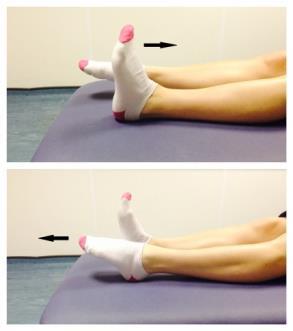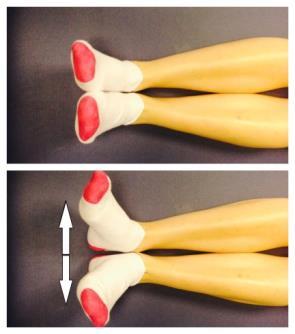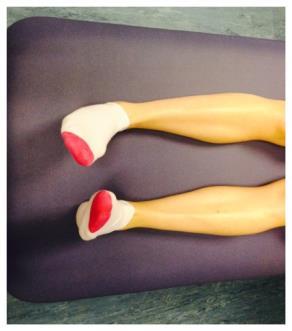Toe Fracture or Dislocation
NHS Virtual Fracture Clinic - Toe fracture/dislocation
Healing:

This injury normally takes 6 weeks to heal.
Smoking will slow down your healing. We would advise that you stop smoking while your fracture heals. Talk to your GP or go to www.smokefree.nhs.uk for more information.
Pain and swelling:
You may have foot pain and swelling for 3-6 months after your injury. Swelling is often worse at the end of the day.
Taking pain medication, elevating your foot and using ice or cold packs will help. More information is on the next page.
 Walking and your boot:
Walking and your boot:
A boot or strapping of the toes is sometimes required for protection and comfort. If done, these are only needed for the first 3 weeks. The boot can be taken off at night and at rest. Please inform us if you are diabetic; you may need a special boot.
You are allowed to put weight through your foot. You may find it easier to walk with crutches or on your heal initially.
Exercises:
It is important to start exercises as soon as possible. Instructions are below.
Follow up:
A follow up appointment is not normally needed for this injury. If you still have significant pain and swelling after 3 months, then please contact the Virtual Fracture Clinic team.
Any questions:
If you are concerned about your symptoms, are unable to follow this rehabilitation plan or have pain other than at the site of your injury please contact the Virtual Fracture Clinic team.
Caring for your injury: Weeks 1-3
If supplied, wear your boot when standing and walking. You can remove the boot when resting, at night and to wash and dress. Wear a long sock in your boot.
Using a cold pack will help with your pain and swelling. You can use an ice pack or bag of frozen peas wrapped in a damp towel. Put this on your foot for up to 15 minutes every few hours. Make sure the ice is not in direct contact with your skin.
Try to rest your foot, especially in the first 24-72 hours. Raise your foot on a stool or cushions to that it is above the level of your hip. This will help to reduce your swelling.
Exercises:
Early movement of the ankle and foot is important to promote circulation and reduce the risk of developing a Deep Vein Thrombosis (blood clot).
Do these exercises 3-4 times a day. Start straight away, you do not need to push into pain.
| 1. Point your foot up and down. Repeat this 10 times. |  |
| 2. With your heels together, move your toes apart to turn the foot outwards. Repeat this 10 times. Do this movement gently within comfort. |  |
| 3. Make gentle circles with your foot in one direction and then the other direction. Repeat this 10 times. |  |
Caring for your injury: Weeks 3-12
It is now 2 weeks since your injury and you can start to wean out of you boot. Stop using it around your own home first and continue wearing it for longer distances. You should aim to be walking without your boot by 6-8 weeks after injury.
It is normal to still have mild discomfort and swelling. This may continue for 3-6 months.
Activity and exercise
Keep doing your exercises until you have recovered full movement in your foot.
Gradually increase your level of activity. You should avoid impact activity for 3 months. This includes running, jumping and dancing.
Frequently asked questions

